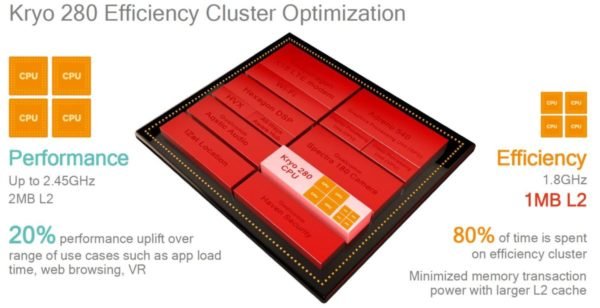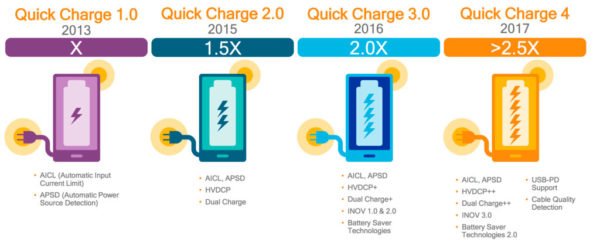For the future mobile devices that may run upgraded chipsets a new processor was recently named as Snapdragon 835, sometimes earlier & the features & details regarding the same was unveiled at the CES 2017. The company has announced the key details & features of its latest mobile SoC & with this Qualcomm has opened up new avenues to the Original Equipment Manufacturers with advanced imaging, display & machine learning capabilities.
Everything You Need To Know About Snapdragon 835: Unveiled At CES 2017:
The Hardware
There have been some changes in the hardware as compared to the earlier CPU configuration. The Octa-core configuration has made a come back with this version of the chipset since it was used in the Snapdragon 820 after which the company returned back to the Quad-core designs. Another big change is with the new Kryo 280 CPU architecture, although being the similar names, the Kryo 280 is a semi-custom CPU design based on an unspecified ARM Cortex core & most probably it would be the Cortex-A73, but not yet cleared by Qualcomm.

Originally the Kryo 280 cores inside theSnapdragon 820 was a complete Qualcomm Solution instead of the older one i.e 810 that has opted for the stock ARM parts. While the new Kryo 280 CPU core is also being used in both the “Performance” with 2.45 GHz & “Efficiency” with 1.9 GHz of clock speeds. Qualcomm has also upped the amount of L2 cache with 2MB available for the high-performance cores.

Although Qualcomm has kept the exact details of its custom CPU designs a secret but it suggests that the licensing arrangement from ARM allows the company to make key changes to the execution pipeline & branch prediction among other inner workings. Afterall Qualcomm is the first processor company to bring a product to market using a semiconductor ARM Cortex CPU, after the ARM announced its custom CPU core licensing options back in May 2016.

Qualcomm has also upgraded its Symphony System Manager which is designed to simplify heterogeneous programming in optimize performance & power consumption across the Snapdragon 835’s process capabilities. Also additionally from the new & improved CPU, DSP & GPU cores, the company has continued its support for fast LPDDR4X random access memory in a dual 32-bit configuration with having the same 1866 MHz clock speed as earlier. Also, the flash memory support has been upgraded to UFS 2.1 as well as eMMC 5.1.
The Performance
Although the performance is definitely going to improve & according to Qualcomm a noticeable 20% of boost over the Snapdragon 820 & the increased cores also suggest that most of the gains will be coming in terms of multiprocessing capabilities. As observed from other SoC & CPU designers, the Snapdragon mainly focusses to greatly improve energy efficiency thus allowing for a sustained peak performance with the long lasting battery too.

Also, Qualcomm is expecting with the smartphone users for an extra 2.5 hours of battery backup in comparison to those using the 820. The energy consumption will be now just half to that of the Snapdragon 801. Qualcomm’s choice for the Samsung’s second generation 10nm FinFET manufacturing node may provide up to 30% increase in area efficiency, combined with up to a 27% boost in performance or may get up to 40% power consumption reduction as compared to the 16nm.
Better Efficiency
Qualcomm has made a number of changes in the other components inside its SoC too while the new semi custom Kryo 280 CPU cores being the noticeable change. The company is also featuring an upgraded Adreno 540 graphics processor with the latest SoC in terms of GPU. The architecture is the same as that of Adreno 530 but it features a number of improvements like faster trilinear filtering & GPGPU compute & boasting a gain of 25% to the 3D rendering performance over the 530.

The latest Adreno 540 have full support for the DirectX 12, OpenGL ES 3.2, OpenCL 2.0 & also the Vulkan graphics APIs, the Google’s Daydream VR platform too is supportable with this change. Additionally, support for 10-bit color has been done for Display & processing capabilities improvements. Color support has been moved on from 16.8 million to 107.4 million.

The DPU has also introduced a new feature called as Q-Sync, that allows for a display’s refresh rate to get linked to the frame rate output from the GPU if the display also supports the technology. There has been an upgrade to the chip’s Hexagon DSP co-processor too. This time Qualcomm has included a new HVX DSP which can easily handle heavy imaging & video processing tasks that too very quickly & efficiently.
Multimedia Support
The support for DSP files too has been added to the Aqstic, along with hardware improvements for better quality of sounds. Qualcomm’s Aqstic WCD9341 audio codec combined with the Snapdragon 835 supports an audiophile grade DAC with overkill 32-bit/384kHz playback capabilities, complete with an SNR at 115dB and ultra-low -105dB THD+N. The noise cancellation is also handled quite very well on this DSP.

The image processing capabilities have also been upgraded with the 835. The ISP now supports the Snapdragon Optical Zoom module bringing up 2X optical zoom capabilities & an improved digital zoom to the platform. Technology being used is the Telephoto lens alongside with the wide angle lens. The spectra remaining the 14 bit dual ISP setup supporting up to dual 16MP cameras or a single 32MP sensor.

Also integration for Electronic Image Stabilization 3.0 & Dual Photodiode Auto-Focus (2PD) support into the module. Providing more efficient gyro sensor sampling & smoothing algorithms, supporting up to 4K resolutions & combining with the heterogeneous compute capabilities for more power efficient video stabilization.
Quick Charge 4.0 Support

Qualcomm this time brings up the support for Snapdragon 835 with revised Quick Charge 4.0 standard. It also remains compatible with the previous releases but now also plays well with a wider range of USB power delivery modes too. With the introduction of the USB Type-C, a number of compatibility issues with various charging standards will be addressed by Quick charge 4.0 by supporting a broader range of modes. With the Quick Charge, 4.0 users will be able to receive up to 5 hours of battery life by charging just for 5 mins with the new standard. This time the Quick Charge 4.0 also features a cable quality detector which will definitely help the later in better efficiencies. Overall the Quick Charge 4.0 should be up to 20% faster than the 3.0 & should charge 30% more efficiently.
The X16 LTE Modem Introduction


The SoC has introduced Qualcomm’s latest X16 LTE modem, offering up to 1 Gbps of downloading speeds. This newer modem is not only about faster image & video downloads but according to Qualcomm, it should also offer up to 5 times typical speed improvements over the Cat 4 modems along with the enhanced carrier aggregation for better coverage at the cell edge. The 835 is also the first Qualcomm processor to come with an integrated 802.11ac modem to save on motherboard space, and to support 802.11ad WiFi out of the box for faster speeds on short range 60GHz WiFi networks. Future plans also show that company is moving towards 5G & faster 1 Gbps data speeds at home & at work.
Overall The Snapdragon 835

This time Qualcomm with the introduction of the Snapdragon 835 had not only boosted out the performance but also had improved the Display, Camera & the graphics technologies have been also updated for better performances. The Snapdragon is surely going to bring the next evolution in the Mobile processing world with the move to machine learning & heterogeneous compute.










